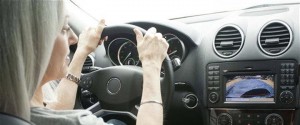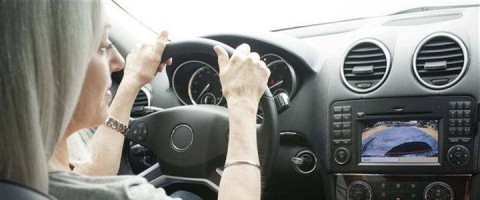 New technologies are responsible for many of the advances, comforts and conveniences of modern life, from the smartphone to wearable items such as “smart” wristwatches and eyeglasses. That’s no different in the car, where new technology is helping people drive more safely.
New technologies are responsible for many of the advances, comforts and conveniences of modern life, from the smartphone to wearable items such as “smart” wristwatches and eyeglasses. That’s no different in the car, where new technology is helping people drive more safely.
While cars today may not look much different from previous model years, the latest technology is helping save lives. One in five injury crashes could be prevented or reduced if all passenger vehicles were equipped with specific types of technology, according to a study from the Insurance Institute for Highway Safety.
Enhancing vehicle safety
In the past, safety features were geared toward protecting drivers and passengers during a crash. Now, newer vehicle technologies have the potential to prevent a collision altogether. Many are already on the market, including:
* Blind-spot warning systems warn drivers of objects in blind spots, especially while changing lanes and parking.
* Back-up cameras warn of objects behind the vehicle to help drivers judge distances and reverse more safely.
* Smart headlights adjust the range and intensity of light based on the distance of traffic and to reduce glare and improve night vision.
* Collision avoidance systems alert the driver when the vehicle may be in danger of a collision.
* Lane departure warnings monitor the vehicle’s position and warn the driver if the vehicle deviates outside the lane.
* Parking assistance indicates distance to objects, making parking easier, or may enable vehicles to park on their own.
* Adaptive cruise control allows the car to adjust its speed depending on traffic conditions.
“As these technologies become more widely available in new cars today, it’s important all drivers learn how they work and how to use them effectively,” says Jodi Olshevski, gerontologist and executive director of The Hartford Center for Mature Market Excellence. “This is especially true for mature drivers, as many technologies can enhance the driving experience as we age.”
Top technologies among mature drivers
Drivers ages 50 to 69, according to a new study from The Hartford and the MIT AgeLab, are most willing to adopt the following vehicle technologies: 1) blind-spot warning systems, 2) back-up cameras, 3) smart headlights, 4) collision avoidance systems, and 5) lane departure warnings.
A majority of participants indicated they are willing to purchase these five technologies, are likely to use them, and think they are worth having.
These technologies can help keep drivers safe and feeling confident behind the wheel. For example, back-up cameras can help drivers with reduced flexibility to see behind the vehicle, and blind-spot warning systems may help drivers with limited range of motion be more comfortable while driving.
The importance of learning about vehicle technology
Learning more about how vehicle technologies work is a smart step to keeping drivers safer on the road. Many new cars already include some safety technologies, and all new cars will be required to have back-up cameras by May 2018.
Staying current on the latest features available — and using them appropriately — may help all drivers, including mature drivers, stay safe behind the wheel. To learn more, drivers can download a free vehicle technology guidebook and take an interactive video quiz at thehartford.com/cartech.
